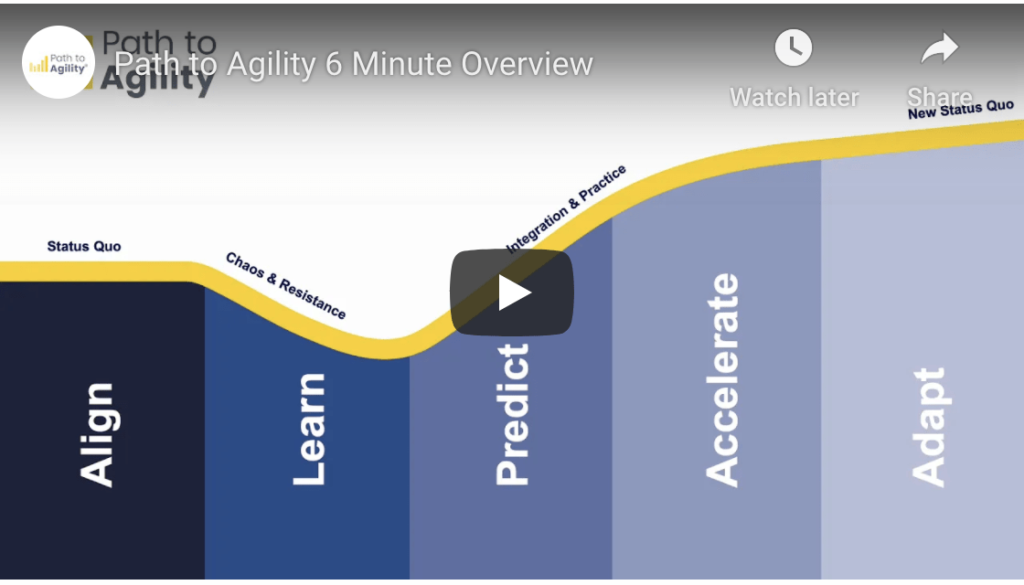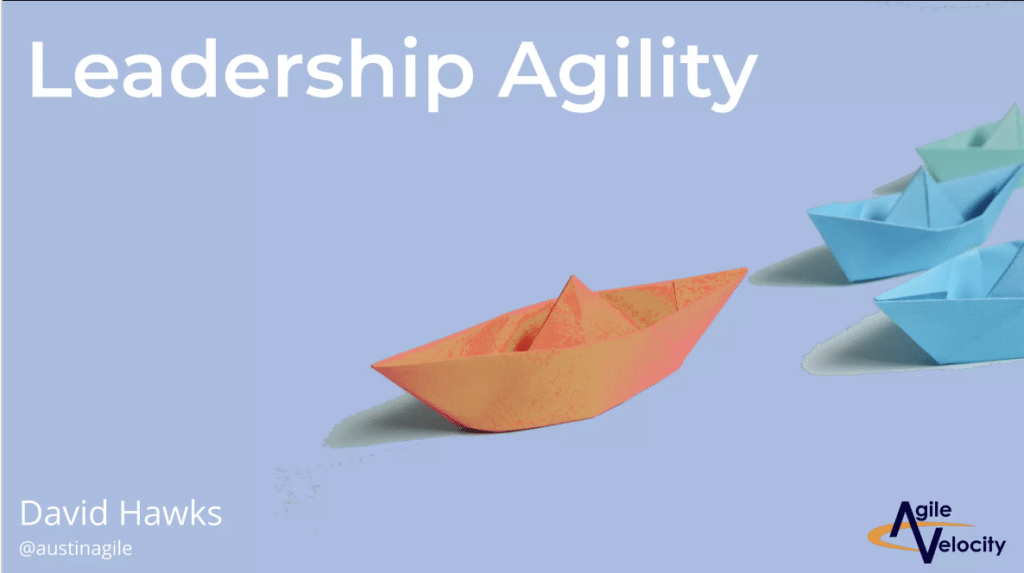Cycle Time Charts Template (for Kanban Reporting)

We have developed a Kanban Excel reporting template for you to use when measuring Cycle Time. This template is for a team to generate a cycle time and spectral analysis charts. The Cycle Time Chart shows the trend over time for cycle time. The Spectral Analysis Chart shows the frequency in which we are meeting […]
What Does An Agile Transformation Look Like? Your Agile Implementation Roadmap

Path to Agility® describes the activities and outcomes of implementing Agile and their impact on culture and business goals. We have taken repeatable patterns we have seen with our clients and combined them with organizational change models as seen in the Path to Agility®
Business Outcomes Part III: 11 Tips for Creating Innovation in Business

We live in a rapidly changing world–one in which customers change their minds quickly and every business has to fight to stay relevant in their market. If someone else has a great idea before you–or worse, the ability to implement their great idea before you–it could mean the end. This is why organizations across the […]
Agile Velocity Changes for Growth: A Letter from David Hawks

Dear Agile Velocity Community, As a coach and trainer, I’ve had the privilege to partner with organizations to help them achieve some really big goals. As the CEO of Agile Velocity, it’s been an honor to grow what was a company of one to multiple teams. I’ve accomplished a life goal of building a business […]
“Overcome Transformation Impediments with Outcome-Driven Agility” Presented at Southern Fried Agile 2019

Overcome Transformation Impediments with Outcome-Driven Agility – David Hawks – Southern Fried Agile 2019 from Agile Velocity As the rate of market disruption increases, it’s now more important than ever that organizations gain the ability to respond, adapt, and thrive. This is why many companies are embarking on Agile transformations. However, few of them ever […]
“Are We There Yet? How to Know You Have Achieved Agility” Presented at Keep Austin Agile 2019

In this workshop at Keep Austin Agile, David Hawks discussed the importance of being outcome vs. practice-driven and how that will lead to sustained impact and organizational agility. Attendees worked together to break down desired business outcomes into core capabilities to help them determine where their organization is and provide them with action items to […]
“HR Agility” Presented at ATX HR June 2019 Meetup

In today’s business, the current rate of disruption and increasing amount of global competition require organizations to treat their employees differently. In this new workforce dynamic, it is more imperative than ever for organizations to foster empowered teams and inspired workers. At ATX HR, David Hawks discussed how HR agility enables focus, innovation, engaged workers, […]
“Leadership Agility” Presented at Agile Leadership Fest 2019

Leadership Agility – Agile Leadership Fest 2019 from Agile Velocity What got you here as a leader is not going to get you to the next level. Faster rate of disruption and a new workforce dynamic are demanding leaders work differently. In this workshop at Agile Leadership Fest, David Hawks discussed key mindset shifts leaders […]
“Why Transformations Get Stuck” Presented at Global Scrum Gathering Austin 2019

Why Transformations Get Stuck – Global Scrum Gathering 2019 from Agile Velocity In this world of exponentially increasing market disruption, it is more imperative than ever for organizations to not only achieve operational agility (efficiency, speed, etc.), but also organizational agility (speed to respond to market change). In this session at Global Scrum Gathering 2019, […]
Agile In Every Department: Agile Marketing

It’s 2019, and Agile has officially transitioned from a software development methodology to a mindset designed for entire organizations. It truly doesn’t matter what business department you highlight—all have similar problems at the root cause level. It’s simple: many teams are burdened with more work than they can realistically get done. Agile can help teams […]
